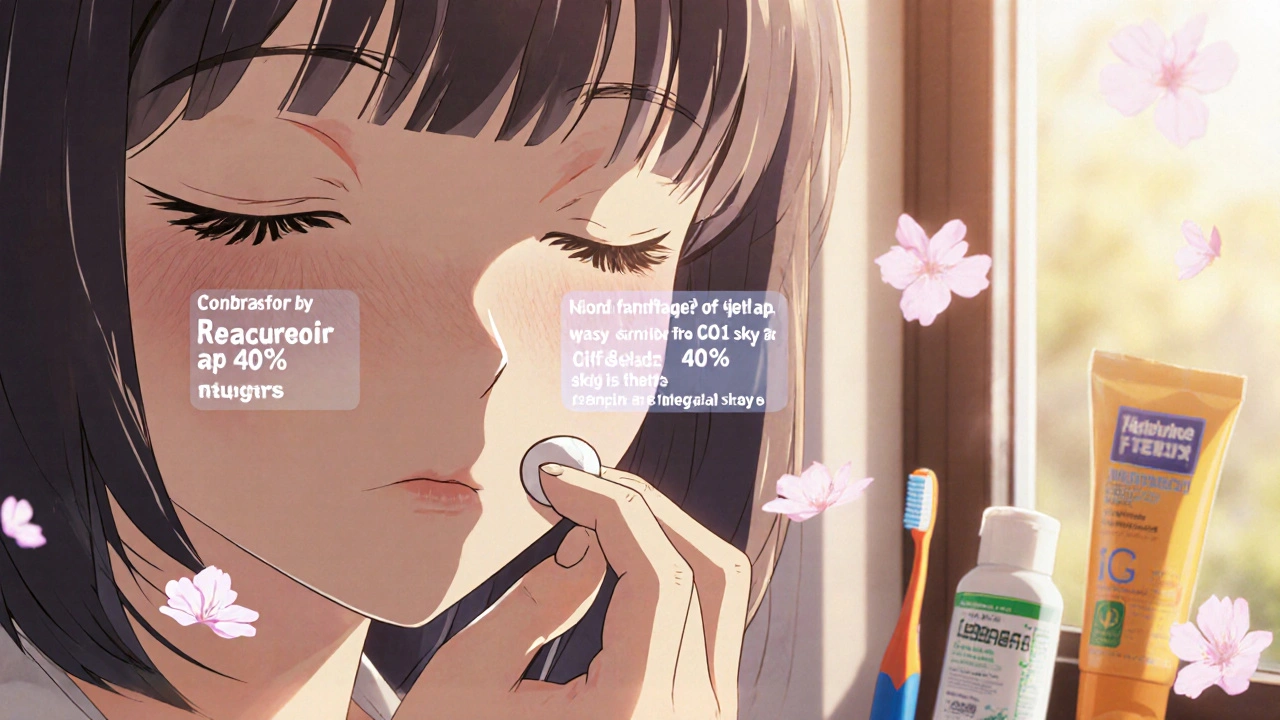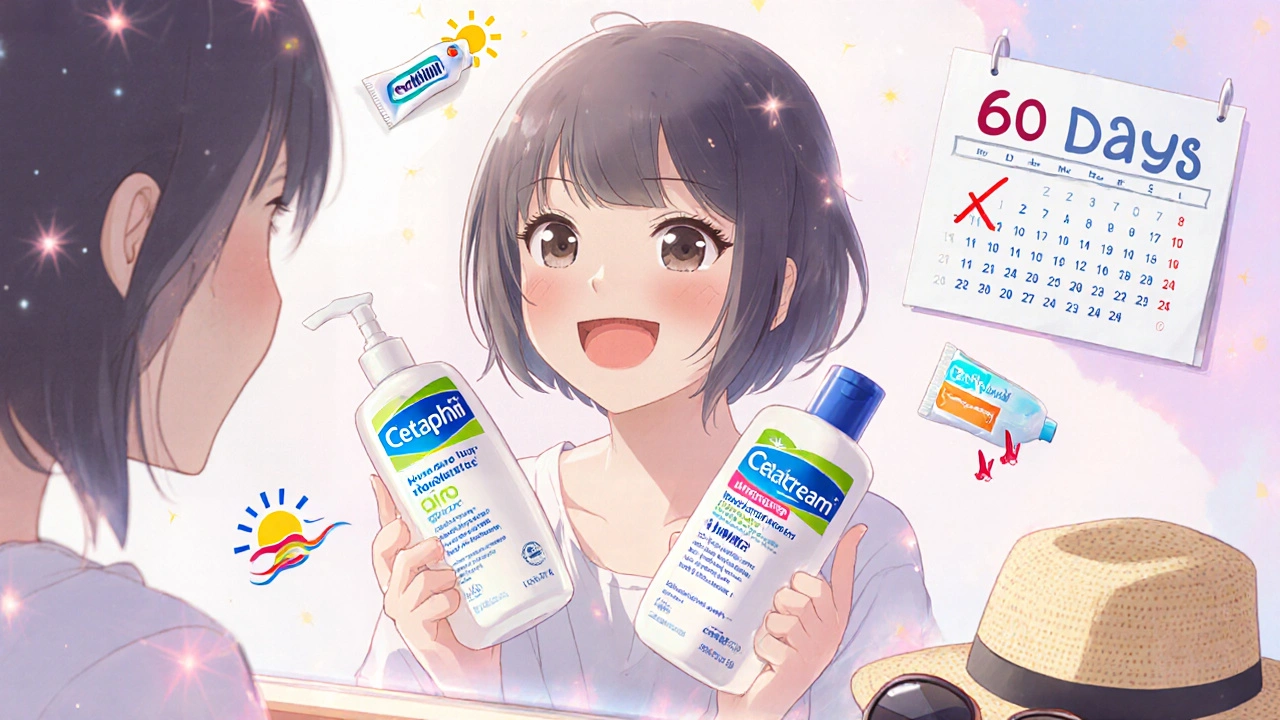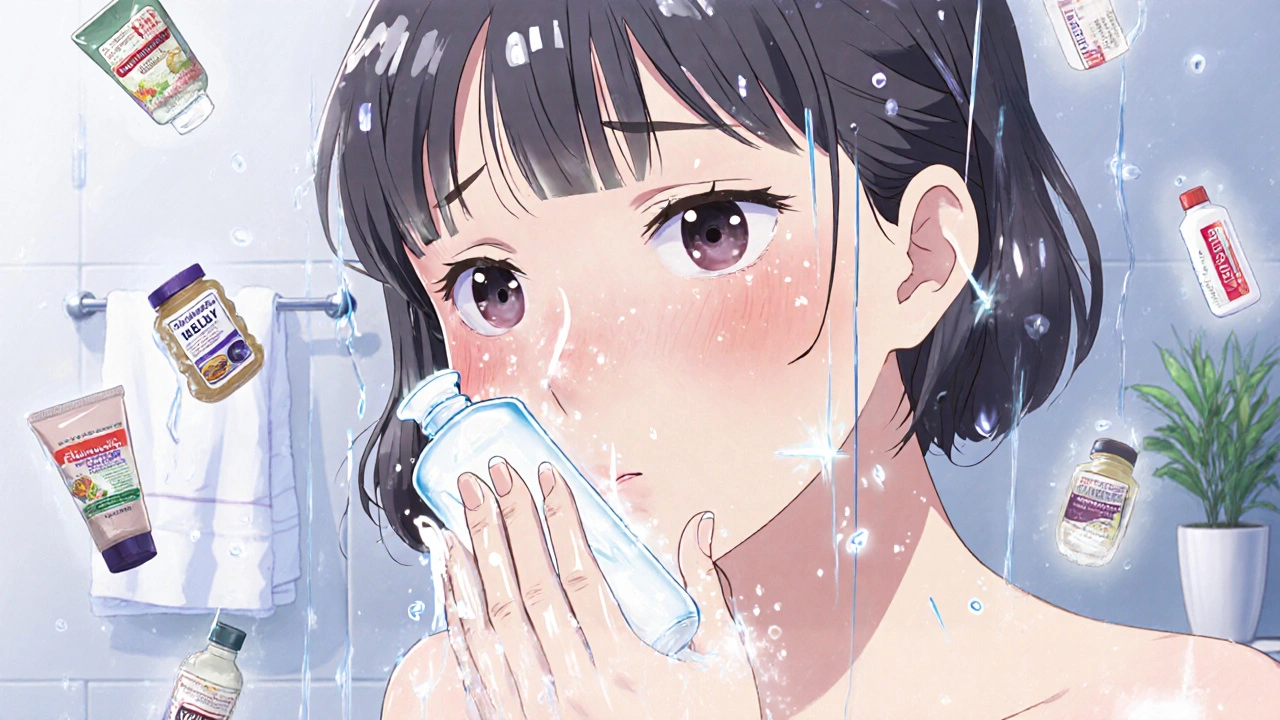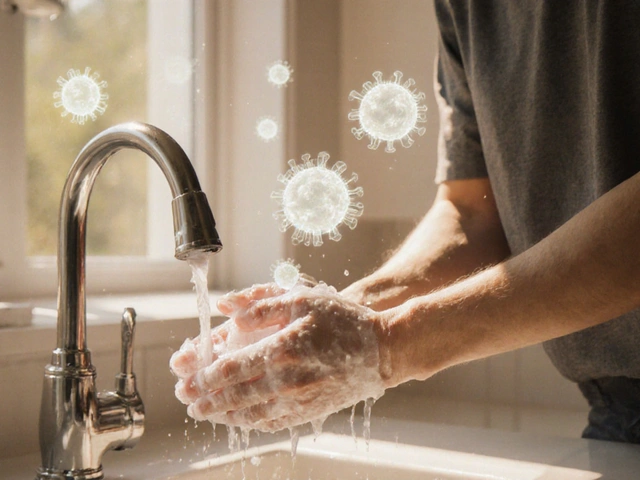Perioral dermatitis isn’t just a rash. It’s a persistent, frustrating condition that turns simple routines-washing your face, applying moisturizer, even brushing your teeth-into minefields. You wake up with tiny red bumps around your mouth, maybe burning or itching, and nothing seems to help. You try every cream, scrub, or ‘natural’ remedy you find online. But the more you treat it, the worse it gets. That’s because most people don’t realize they’re feeding the problem with everyday products they think are harmless.
What Actually Causes Perioral Dermatitis?
Perioral dermatitis isn’t caused by poor hygiene or bad diet alone. It’s a reaction triggered by specific ingredients and habits that disrupt your skin’s natural barrier. The biggest culprit? Topical steroids. Whether it’s hydrocortisone cream you used for a ‘bug bite’ or a prescription ointment for eczema, using these on your face for more than two weeks sets off a cycle. At first, it calms the redness. Then, when you stop, your skin rebounds harder-worse than before. About 85% of cases link directly to this pattern. But steroids aren’t the only offenders. Your moisturizer might be the problem. Products with petroleum jelly, dimethicone, or beeswax create a thick, occlusive layer that suffocates your skin. These ingredients are common in ‘rich’ creams marketed as hydrating. Yet they trap irritants and trigger inflammation in 45% of cases. Sunscreen is another silent trigger. Mineral sunscreens with zinc oxide or titanium dioxide above 10% concentration can clog pores and irritate sensitive skin. Even ‘gentle’ sunscreens can flare up perioral dermatitis in 22% of users. The same goes for makeup. Foundations with isopropyl myristate, fragrance, or heavy oils are major irritants. In fact, 68% of cosmetic-related flare-ups trace back to foundation. Even your toothpaste matters. Fluoride, especially sodium fluoride at 1,000-1,500 ppm, causes reactions in 37% of people. It’s not the fluoride itself-it’s how it interacts with the skin around your lips. Switching to a non-fluoridated toothpaste often leads to noticeable improvement within 4-6 weeks. Hormones play a role too. For women, symptoms often worsen before their period. Oral contraceptives contribute in 28% of cases. Environmental factors like wind, sun exposure, and even chewing gum (yes, really) can aggravate the condition in up to 19% of patients.Why Gentle Skin Care Isn’t Just About Being Mild
When dermatologists say ‘gentle skin care,’ they don’t mean switching to a ‘natural’ brand. They mean stripping everything back to basics-with precise product specs. First, stop washing your face twice a day. That routine, which works for oily or acne-prone skin, strips the barrier in perioral dermatitis patients. Eighty-eight percent of people make this mistake. Instead, wash once daily with a non-foaming cleanser. Look for pH 5.5-6.5. Cetaphil Gentle Skin Cleanser is one example. No sulfates. No fragrances. No exfoliating beads. Just water and mild surfactants. Moisturizing is still necessary, but not all moisturizers are created equal. Avoid anything thick, greasy, or labeled ‘anti-aging.’ You need something light, with ceramides between 0.5% and 2%, and hyaluronic acid under 1%. Vanicream Moisturizing Cream fits this profile. It’s free of dyes, fragrance, and common irritants. Apply it sparingly-just enough to feel hydrated, not slick. Sun protection? Skip the thick creams. Use a liquid or gel sunscreen with mineral filters under 5% concentration. EltaMD UV Clear Broad-Spectrum SPF 46 (with 4.7% zinc oxide) is a top choice among patients. If you’re still reacting, try a wide-brimmed hat. Physical protection is safer than chemical filters when your skin is this sensitive. Makeup? If you must wear it, choose non-comedogenic, fragrance-free products. Avoid anything with titanium dioxide above 3%. Stick to tinted moisturizers or mineral powders. And never sleep in makeup-even if it’s ‘clean’ or ‘natural.’What to Do When You Stop Steroids
This is the hardest part. Stopping topical steroids doesn’t lead to instant relief. In fact, symptoms often get worse for 7-14 days. This is called steroid withdrawal. Your skin is rebelling. It’s not an infection. It’s not an allergy. It’s your skin trying to reset. During this phase, you’ll likely see more redness, flaking, and even pus-filled bumps. It’s scary. But it’s temporary. Most people report improvement after two weeks. The key? Don’t go back to steroids. Don’t cover it with more cream. Stick to the gentle routine. Cold compresses can help soothe the burning. Avoid heat, steam, and hot showers. This phase is why so many people relapse. They panic, reapply hydrocortisone, and the cycle starts again. About 72% of users admit they’ve used steroid creams for more than two weeks before realizing it was the cause. Don’t be one of them.
Medical Treatments That Actually Work
Gentle skin care alone helps-but for moderate to severe cases, medical help is needed. Topical antibiotics like metronidazole 0.75% gel are first-line. Applied twice daily, they clear 70% of cases in eight weeks. Pimecrolimus cream (1%) is a non-antibiotic alternative that works in 65% of cases with fewer side effects. Oral antibiotics are used for stubborn cases. But not the old-school 100mg doxycycline. That causes nausea and sun sensitivity in nearly half of users. The newer 40mg modified-release version works just as well-with only 12% side effects. It’s taken once daily for 12 weeks. This low-dose approach reduces resistance risk and keeps your gut healthy. Treatment isn’t quick. Most people need 6-12 weeks to fully clear. And if you stop too early? There’s a 40% chance the rash comes back.What Doesn’t Work (And Why)
You’ve probably tried everything: tea tree oil, aloe vera, apple cider vinegar, coconut oil. None of these are backed by clinical evidence for perioral dermatitis. Some-like coconut oil-are actually occlusive and can make things worse. Exfoliants? Avoid them. Even ‘gentle’ scrubs or chemical exfoliants like salicylic acid or glycolic acid damage the barrier. Retinoids? They’re out. Same with alcohol-based toners and ‘brightening’ serums. Dietary changes? Some people report improvement with gluten-free diets-43% in Dr. Dropin’s clinic. But Cleveland Clinic says only 12% of unselected patients benefit. So it’s not a universal fix. If you suspect food triggers, try eliminating one at a time. But don’t expect miracles.Real Patient Success Stories
On Reddit’s r/SkincareAddiction, users share their journeys. One woman, 29, had a rash for 18 months. She used hydrocortisone daily. When she stopped, her face looked like it was on fire for two weeks. She switched to Cetaphil, Vanicream, and EltaMD. At 30 days, the redness faded. At 60 days, her skin looked clear. She hasn’t had a flare-up in 11 months. Another man, 34, noticed bumps after switching toothpaste. He didn’t think fluoride mattered. He switched to a fluoride-free brand. Within five weeks, the rash around his mouth vanished. The common thread? Simplicity. Three products max. No new ‘miracle’ creams. No trying to fix it with more stuff.
How to Prevent Recurrence
Perioral dermatitis has a 40-60% recurrence rate if triggers aren’t fully removed. To keep it away:- Never use steroid creams on your face without a dermatologist’s direction.
- Read labels. Avoid dimethicone, petrolatum, and sodium lauryl sulfate.
- Use non-fluoridated toothpaste-even if it’s more expensive.
- Wear a hat in strong sun or wind.
- Keep your routine minimal: one cleanser, one moisturizer, one sunscreen.
- Replace your pillowcase twice a week. Bacteria and oils build up fast.
When to See a Dermatologist
If your rash hasn’t improved after four weeks of strict gentle care, or if it’s spreading to your eyes, it’s time to see a specialist. Don’t wait. Early diagnosis prevents long-term damage. A dermatologist can confirm the diagnosis, rule out rosacea or fungal infections, and prescribe the right medication.What to Ask Your Dermatologist
- Could this be caused by a product I’m using?
- Do I need oral antibiotics, or can I start with a topical?
- Can you recommend a non-fluoridated toothpaste brand?
- Is my moisturizer safe? Can you check the ingredients?
- How long should I wait before trying makeup again?
Perioral dermatitis doesn’t have to be a life sentence. It’s not your fault. It’s not your skin being ‘too sensitive.’ It’s a reaction to common products that most people use without thinking. With the right knowledge and discipline, you can clear it-and keep it away for good.
Can perioral dermatitis go away on its own?
It rarely does. Without removing triggers like steroids, heavy moisturizers, or fluoride toothpaste, the rash will likely persist or worsen. Even if it seems to improve temporarily, recurrence is common-up to 60% of cases return if the root causes aren’t addressed.
Is perioral dermatitis contagious?
No, it is not contagious. You cannot catch it from someone else, and you cannot spread it to others through touch, sharing towels, or kissing. It’s an inflammatory reaction triggered by internal and external factors, not an infection.
How long does it take to heal?
Healing takes time. After stopping steroids, you’ll likely see worsening for 7-14 days. Noticeable improvement usually begins around 3-4 weeks. Full clearance with gentle care and medication typically takes 6-12 weeks. Patience is critical-rushing the process leads to relapse.
Can I wear makeup with perioral dermatitis?
You can, but only after your skin has stabilized. Use only non-comedogenic, fragrance-free products with titanium dioxide below 3%. Avoid foundations altogether at first. Mineral powders or tinted moisturizers are safer options. Always remove makeup before bed-even if it’s labeled ‘gentle.’
Why does my skin burn when I use water?
Your skin barrier is damaged. Water, especially hard water, can sting when the protective layer is compromised. Use lukewarm water, not hot. Pat dry gently-don’t rub. Consider using a humidifier in dry climates. Over time, as your barrier heals, sensitivity will decrease.
Are natural or organic products safe?
Not necessarily. ‘Natural’ doesn’t mean non-irritating. Coconut oil, shea butter, tea tree oil, and essential oils are common in ‘clean’ brands-but they’re often occlusive or sensitizing. Stick to products with minimal, clinically tested ingredients. Look for ‘fragrance-free’ and ‘hypoallergenic’ labels, not ‘organic’ or ‘plant-based.’
Can stress make perioral dermatitis worse?
Yes. Stress doesn’t cause perioral dermatitis, but it can worsen inflammation and delay healing. Many patients report flare-ups during high-stress periods like exams, work deadlines, or family issues. Managing stress through sleep, breathing exercises, or therapy can support recovery, but it won’t cure the condition alone.
Will I need to change my entire skincare routine forever?
Not forever-but long-term, yes. Once healed, you can slowly reintroduce products one at a time, waiting 2-4 weeks between each. Most people find they’re better off sticking to a simple, minimalist routine. You don’t need 10 products. You need three: a gentle cleanser, a light moisturizer, and a safe sunscreen. That’s it.







